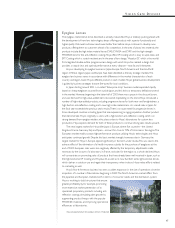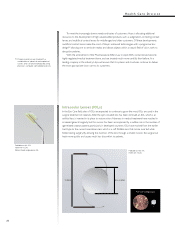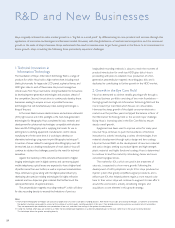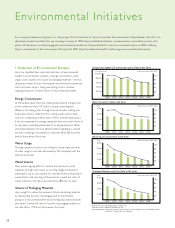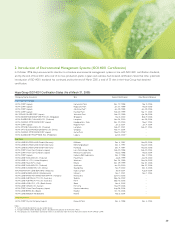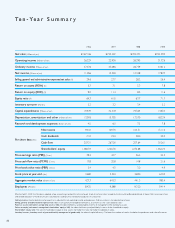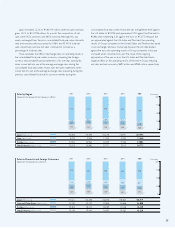Pentax 2005 Annual Report Download - page 28
Download and view the complete annual report
Please find page 28 of the 2005 Pentax annual report below. You can navigate through the pages in the report by either clicking on the pages listed below, or by using the keyword search tool below to find specific information within the annual report.
Transitions in the Board of Directors
Corporate Governance Structure
1989
1990
1991
1993
1994
1995
1999
2000
2001
2002
2003
2004
17
16
15
12
10
8
7
6
6
6
8
8
17
16
15
12
10
Year
Internal directors
Outside directors
Total number of directors
Reducing the Number of Directors and
Instituting a Majority of Outside Directors
To guard against the potential for stagnation in the Board of
Directors system, and to ensure lively debate, Hoya has since
1989 been reducing the number of its directors. The number of
directors has been more than halved, from 17 in 1989 to eight in
1995, and the first outside directors were appointed during this
period. In 2003, of the eight directors, a majority of five were
outside directors. The three internal directors serve concurrently
as executive officers, engaged in operation of the business. With
an organizational structure that incorporates a divisional
organization and internal companies, Hoya has proceeded to
devolve authority from executive officers to the head of each
business division to a great extent. Under this system, the head of
each business division is responsible for operational execution.
The Move to the Company-with-Committees
System
I
n June 2003, Hoya instituted the company-with-committees system.
Three committees have been established. Proposals to appoint
directors and executive officers or relieve them of their posts are
decided by the Nomination Committee. The Compensation
Committee determines fees paid to directors and executive officers.
The Audit Committee receives reports from an independent
auditor and scrutinizes financial statements, and through observation
and scrutiny of internal control, it audits the business conditions and
property of the Company. The membership of all three committees
is drawn entirely from the five outside directors. This has given Hoya
a system whereby the external directors, who stand for the
shareholders, would even be able to relieve the CEO of his post.
Hoya also strives to ensure that sufficient staff members are
available to assist its external directors. Three such employees are
assigned exclusively to secretariat duties with the Audit Committee,
and one each, with a background in human resource administration,
holds concurrent positions with the Nomination Committee and
the Compensation Committee.
Internal Directors: 3
(serving concurrently as
executive officers)
Outside directors: 5
Collaboration and
mutual monitoring
Collaboration and
mutual monitoring
Divisions
ElectionSupervision and advice
(Board of Directors)
(Executive Officers)
Compensation Committee
5 outside directors
Nomination Committee
5 outside directors
Audit Committee
5 outside directors
President
Executive Officers
(3 internal directors)
General Meeting of Shareholders
Compensation
Committee
Secretariat
Nomination
Committee
Secretariat
Audit
Committee
Secretariat
Execution of
operations
Corporate Governance
Hoya treats corporate governance as a key management principle, and has instituted many reforms based on corporate governance ideals.
Based on the fundamental vision that “companies are owned by their shareholders,” we ensure that Hoya is not managed according to
the internal guidelines held by only a small part of the management team. Instead, we have set up a system under which independent
observers take the standpoint of shareholders, undertaking appropriate checks. At the same time, management and operational areas
have been separated, with the objective of accelerating decision-making processes.
Election



